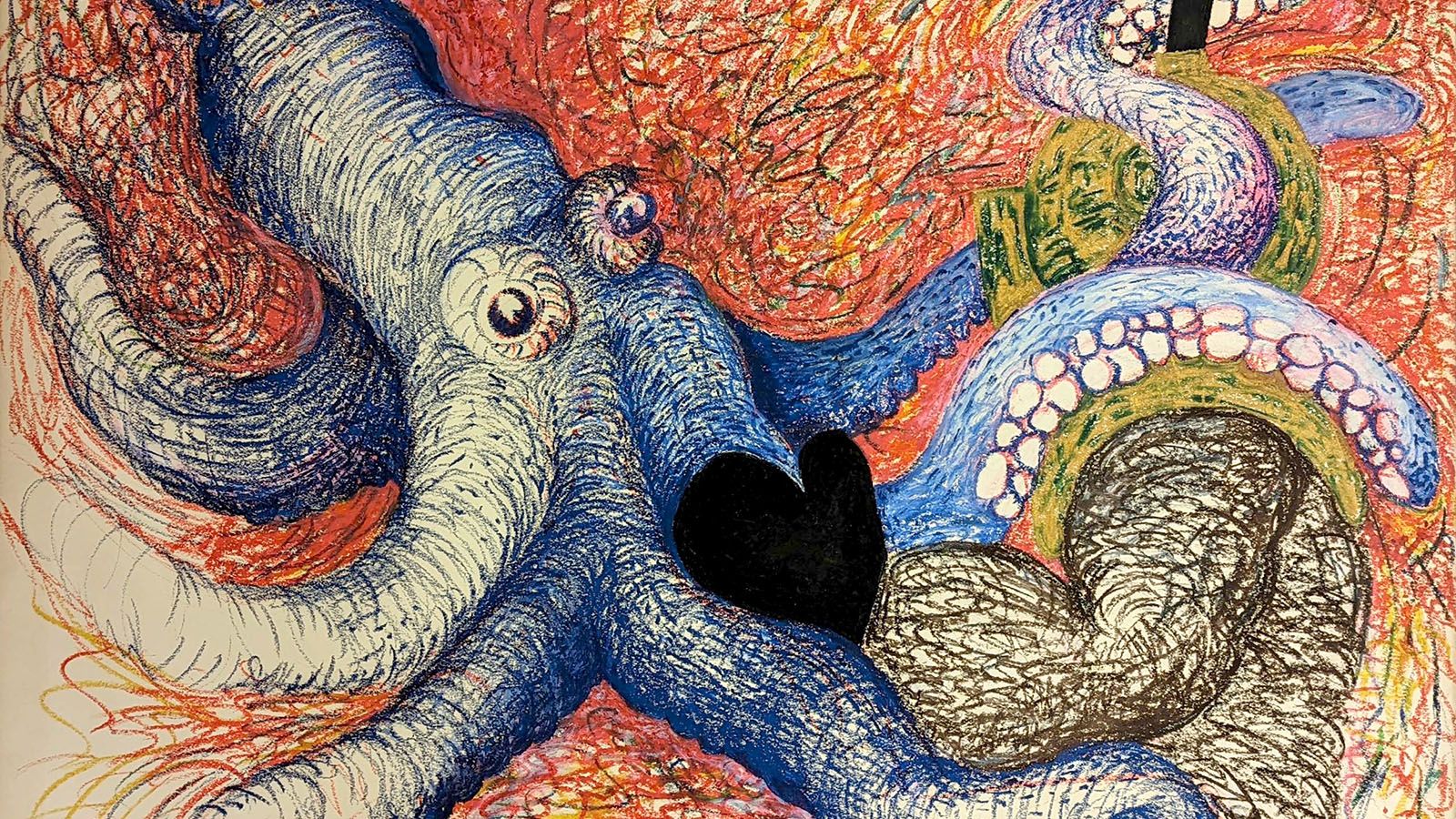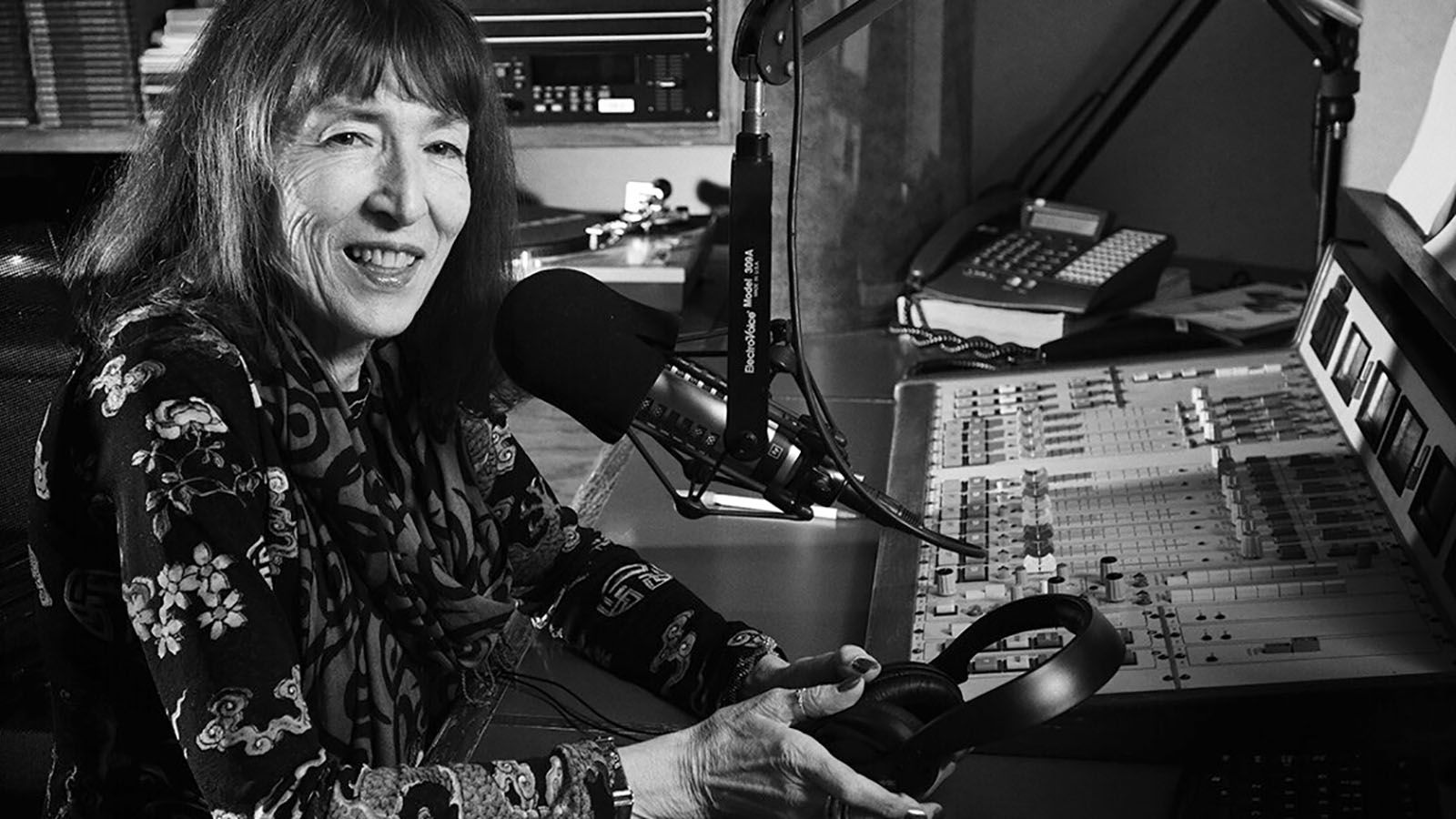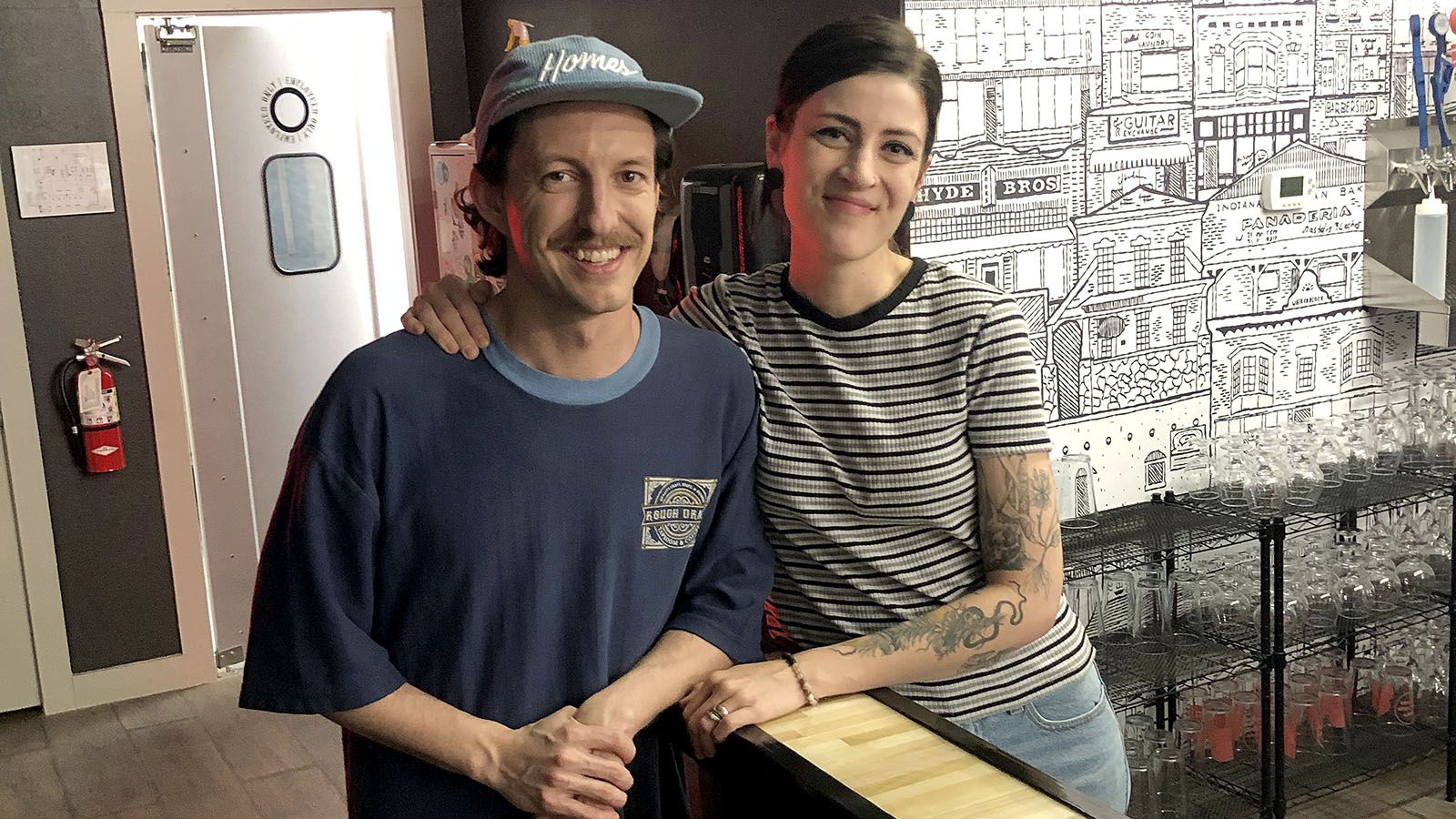Fort Wayne Museum of Art is doing their part to keep William Dutterer’s legacy alive.
“One of the things we like to do is celebrate and promote the lives of American artists who maybe didn’t get a lot of notoriety in their lifetimes, but were still doing serious work,” said Suzanne Slick, who is curator for the Below the Surface: A Deep “See”exhibit that runs until July 9.
“He was a small-town guy,” Slick said. “He liked motorcycles and tattoos and auto racing. He wasn’t pretentious at all. You can see that in his work. He was a serious scholar, too. So, he wasn’t just playing around. He was working things out in his mind.”
Getting work to the masses
Over the course of 40 years, Dutterer avoided being restricted to any style, moving from minimalism to figuration to iconography. Regardless of the style, the human psyche was always at the forefront of his work before he died of cancer in 2007.
A decade after his death, his wife, Jamie Johnson-Dutterer, established a trust to share his work.
“Throughout his life, he really made a choice to reject the art world and the marketing game that kind of came with it,” said Lauren Novotny, collection manager of The William S. Dutterer Trust. “He never really promoted his work or his craft. So, the strategy of the trust was to focus on bringing his work to populous communities and engaging with local markets in a way that felt true to the artist and his work. He never really wanted to engage exclusively with New York City.
“Fort Wayne was highlighted among a group of museums that would be a great place to stage a show. Fort Wayne’s museum, they show things that are outside the bounds of their collection and engage not only the local community, but they speak to a more global nature.”
Slick said Johnson approached the museum a few years ago and gave them pieces to exhibit. Due to the pandemic, the timing never worked out until Slick suggested the exhibit late last year.
“He was an interesting guy,” Slick said. “He was a student of Grace Hartigan, who was a second-generation abstract expressionist. Bill wasn’t really comfortable with the gallery scene, so he’s not very well known, but he was a prolific artist and a dedicated professor for two decades.”
art for everyone
Born in the blue-collar town of Hagerstown, Maryland, Dutterer graduated from Maryland Institute College of Art in Baltimore, where he studied under Hartigan. He went on to teach at the Corcoran School of Art in Washington, D.C., and continued to teach there after moving to New York City in 1979. He later was able to stop commuting to Washington after taking a job at The New School in New York in 1986.
While teaching, he continued to create, including many of the works from his various series like Light Surface, Cut & Folded, and “one of his most celebrated and beloved series” Joe Diver.
“It’s literally a deep-sea diver exploring the depth of the ocean,” Novotny said of the series. “Joe Diver essentially became a stand-in for the artist himself.”
The colorful nature of the Joe Diver series was a departure from his earlier work, but once again, he was exploring the human psyche.
“I like the whimsy of the pieces he did when he moved back into figuration,” Slick said. “He had been working completely in abstract, then he got back into figuration. They’re kind of cartoonish, they’re kind of enigmatic. Very inventive.”
heady material
One of the most personal series he did was Heads, which spans pre- and post-9/11, then bled into the war in Afghanistan.
“It really goes into speaking one’s truth,” Novotny said of the series, noting it was his most contemporary and relatable. “It was all done pre- and post-9/11. He was living in Soho and saw the towers fall from the rooftop of his studio. He goes back into the studio and takes that series and puts it on steroids.
“This was during the war in Iraq and Afghanistan, and he was incredibly touched and moved by that,” she added. “He had friends that he knew in Afghanistan. His wife worked with a nonprofit for young girls in Afghanistan, so they had a lot of friends there when all of this began. He felt compelled to make artwork in response to all of that.”
And his artwork is here to be embraced by everyone.
“He goes into the human condition, and all those things are universal and felt by everyone, not just artists or high-brow art people,” Novotny said.
good landing spot
Thanks to Fort Wayne Museum of Art’s reputation, Johnson felt it would be a good spot for Dutterer’s work, which will remain in their permanent collection.
“It’s incredibly exciting,” Novotny said. “Fort Wayne is the first stop, and we’re just hoping the everyday person gets to see this work and experience and engage with it, not just at a museum in L.A. or Miami or New York City. His work is universal in a way that artwork sometimes misses the mark.”
The museum also received high marks thanks to its lack of pretension, which was something the trust believes Dutterer would have appreciated.
“Him going undiscovered really has nothing to do with the merit of his work,” Novotny said. “It’s just him kind of taking on this punk ethos and not really wanting to play the art world self-promotion game of the ’70s and ’80s.
“I’ve pored over his personal notebooks, and he speaks so much about attending these art gallery openings. It’s not that he felt like an impostor, but he felt that to self-promote his work was wasted energy. He put all of that energy into the studio. He would see his friends and his contemporaries bringing dealers over to their studio spaces, and that was just something he did not feel comfortable doing. He was a bit shy. Not that he was a recluse in any sense of the word, but he kept to himself and just poured all of his energy into his artwork and teaching.”
Although he passed away 16 years ago, his artwork lives on … which is the sole mission of his trust.
“It’s about Bill’s work really finally getting the resources and the momentum behind it to give his work a real platform,” Novotny said.





